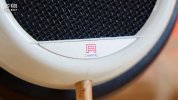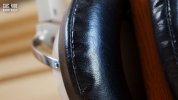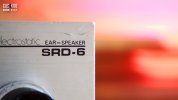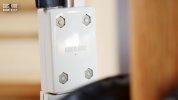- Joined
- Aug 13, 2022
- Messages
- 97
- Likes
- 887
Measurement Conditions Explanation And Chart Interpretation Of Cuckoo Studio Review

Measurement Conditions Explanation And Chart Interpretation Of Cuckoo Studio Review
What you are about to read is the measurement conditions explanation and chart interpretation of Cuckoo Studio Review. This will help you better understand our measurement conditions, address any doubts about our data, and assist you in better understanding the information we aim to convey...
 www.audiosciencereview.com
www.audiosciencereview.com
Welcome to Cuckoo Studio Review. I'm Anzol,this is a program dedicated to reviewing audio products from the perspective of a mixing engineer.
We've received the STAX SR-5 from Sandaimao. I'd like to thank him for his support of the channel.Let's take a look at how these headphones perform.
The STAX SR-5 was released in 1975, nearly half a century ago. Those familiar with the brand might know that the SR-1 was their inaugural model in 1960, and while the subsequent SR-2 and SR-3 had detail changes, They retained the vintage "big scissor" headband design. The most significant change in the SR-5, based on the SR-3, is here: the single-rod adjustment's exposed metal has been replaced with the now more common rectangular plastic casing with silver decorative patches, and it's marked with the minimalist MODEL SR-5
and "electrostatic earspeaker" labels.
*old SR-1 (1960)
* SR-5(1975) most significant changes.
The original earpads are on the firmer side, and the internal space is not very large. Some modern headphones often overlook the addition of a bi-directional pivot design, which is not absent here, allowing for a better fit with the ears. With its weight under 300 grams and a moderate clamping force, the wearing experience becomes extremely comfortable when switching to third-party larger earpads. The black metal mesh is the open-back design of the SR-5, with the retro-style L and R indicators printed on each side.





The SR-5 provided by Sandaimao is surprisingly well-preserved; for a product that has survived nearly half a century, the white body has not yellowed significantly, and there are only a few scratches. The cable integrity is also not an issue. Although the initial SR-5 is not its last version, for me, it has reached a just-right balance of modern and vintage,looking very satisfying for collectors.
Accompanying the SR-5 is the recommended pairing from that era, the SRD-6.
Compared to the headphones themselves, its rust-filled body shows its age. But this old-style electrostatic "amplifier" connection method requires, like passive speakers, to be connected to another amplifier. The front knob only switches between speaker and headphone outputs, and the gain level still needs to be adjusted by the preceding amplifier.So calling it an amplifier is not quite accurate.It is a Headphone Adaptor, an adapter for converting amplifier connections to electrostatic interfaces.


Let's see how this product, which was priced at a steep $750 back in 1975, performs sonically.
Frequency Response:
With the Harman 2013 curve as compensation, when switching to third-party larger earpads, it shows an overall excellent flatness. There's about a 3dB gain between 300-500Hz, a small 4dB dip around 1-2KHz, and some airiness gain above 10KHz. Of course, to get closest to the original sound of these headphones, you'd need to use all the original parts, as earpads have a significant impact on sound. So we measured with the original earpads, but unfortunately, the firm pads did not maintain a good seal on the testing equipment, resulting in low-frequency roll-off due to leakage. And deliberately pressing the headphones for a mid-high frequency response also deviates from actual wearing.
However, by analyzing the existing data, we can still glean some information. For example, some of the airiness gain and mid-low frequency gain/mid-high frequency dip are likely due to the third-party larger earpads. If worn properly, with the original earpads or other types, we can achieve a flatter frequency response. This is a pair of headphones with high objectivity. Interestingly, the SR-5's sound vents are only arranged in the front half, directly facing the part that fits into the ear canal. Although different from some modern angled drivers, this is indeed a very useful detail (in fact, the SR-5 also has a slight angle). However, it's important to note that with this design, headphones must not be worn backwards, as the sound vents moving to the back of the ears will produce a completely different frequency response and sound odd.
Harmonic Distortion:
The STAX SR-5 paired with the SRD-6 has OK distortion performance. At normal listening levels, low-frequency distortion is close to 1%, and the highest mid-high frequency distortion is around 0.3%. This level won't introduce too much audible harmonic distortion. However, compared to some modern well-designed electrostatic headphones, the parameter level is a bit higher. At louder volumes, low-frequency distortion significantly increases, but other frequencies remain below 1%, relatively clean. Under extreme testing, although other frequencies remain very clean, low-frequency distortion starts to get out of control, soaring above 10%.
This coincides with a compression roll-off in low-frequency response. Its maximum sound pressure level in the low frequencies is not very impressive. Regarding left-right distortion consistency, the right side has an additional mid-low frequency distortion peak, which may or may not be due to aging issues, but maintaining this level of sound quality is still quite remarkable.
Cuckoo Studio mixing space:
demonstrating the sound with the third-party larger earpads. The slight midrange boost brings the main instruments and vocals forward, and the high-frequency airiness gain adds some volume to high-frequency percussion and breathy sounds. But the overall tendency towards flatness means the SR-5's soundstage doesn't deviate too much from an objective standard. The overall sound is still very close to an ideal flat playback environment. In terms of left-right consistency, there are some mismatches in the mid and mid-high frequencies with the larger earpads, but these are not present with the original earpads. Eliminating the variable of the larger earpads, the SR-5's left-right consistency is excellent, resulting in a solid central image.
Although the low-frequency performance is not great at high volumes, even producing compression roll-off, at normal listening levels, the controlled third harmonic distortion does not affect the cleanliness of the sound too much. Overall, the sound reproduction is very transparent and clean. Subjectively, it can produce a very dry and prominent midrange, with the sound hitting you “quickly”. The bass is not as cohesive as that of the newer HD600, appearing more brittle. To some extent, its very straightforward sound characteristics might even be more monitor-like (on a mixing level) than some modern monitoring headphones, fitting well with my imagination of the golden sound standard of that era.
The SR-5 did not continue to be produced for decades like some headphones, and in fact, I heard that STAX only produced about 25,000 units in the 20 years following its release, including subsequent models in this series. Newer models from the company have since relegated it to the sands of history. But this lightweight, minimalist in appearance, and flat-sounding SR-5 could have been considered top-tier in its day and even now, its sound quality doesn't seem outdated, carrying some advantages that seem to have been forgotten by some of today's similar headphones.
I heard that the original owner who passed the SR-5 on to Sandaimao had long since retired from the audiophile world, but fortunately, during those years of earnestly enjoying music, he really chose an outstanding headphone product.
This is Cuckoo Studio Review.
I'll continue to explore the secrets of headphones with you.










